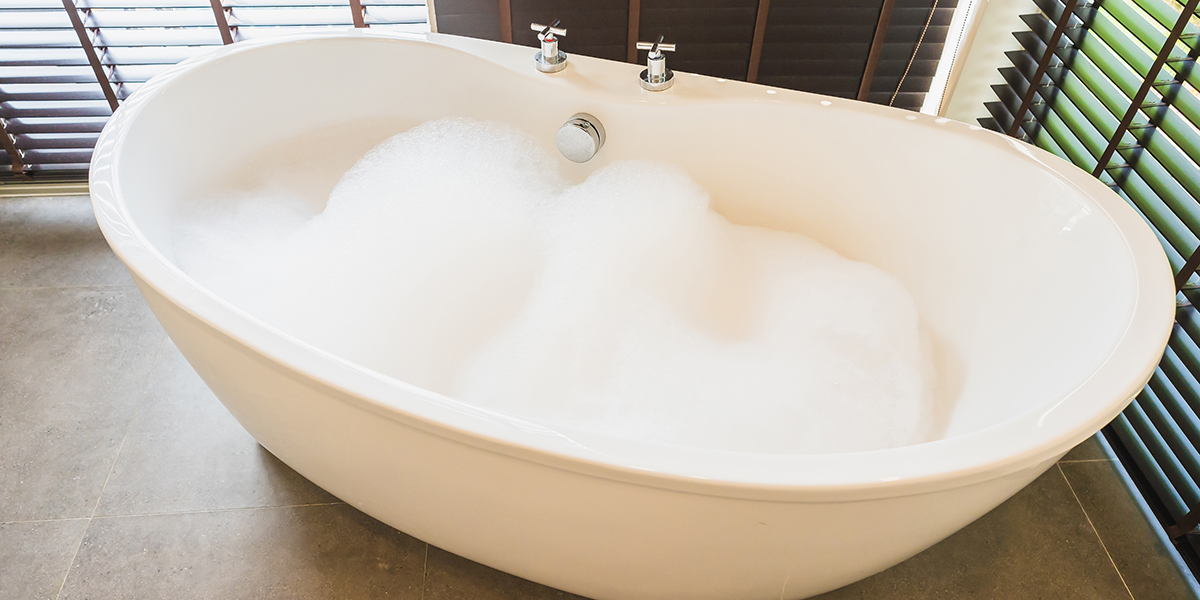An Definitive Answer: Discharge Coming Up Through the Bathtub
An Definitive Answer: Discharge Coming Up Through the Bathtub
Blog Article
The writer is making several good observations on What To Do If Sewage Starts Backing Up Into the Shower as a whole in this great article followed below.

Sewer back-up in the tub can be a stressful and unsanitary issue for any kind of property owner. Not just is it bothersome, but it likewise poses significant wellness dangers and shows underlying concerns with the plumbing system. Understanding why sewer is showing up with the bath tub is critical for taking ideal activity to deal with the trouble efficiently.
Intro to the Problem
Common Factors for Sewer Backup
Blockages in the Sewer Line
Among the most common root causes of sewer back-up is an obstruction in the drain line. This can happen as a result of the buildup of particles, oil, or international things in the pipes, preventing proper circulation and triggering sewage to support right into your bath tub.
Tree Root Invasion
Tree roots seeking moisture and nutrients can infiltrate sewage system lines through little splits or joints. In time, these origins can grow and increase, causing considerable damage to the pipelines and leading to sewage backup concerns.
Understanding the Issue
When sewage starts backing up right into the bath tub, it's a clear indicator of an issue with the water drainage system. The wastewater that must be flowing far from your home is instead finding its back right into your space, which can bring about considerable damages and carcinogen.
Possible Reasons
Numerous variables can contribute to sewage back-up in the bath tub. From blockages in the sewage system line to issues with the plumbing facilities, identifying the source is essential for finding a remedy.
Aging Infrastructure
Older homes may have dated plumbing systems that are a lot more at risk to deterioration, splits, and damage. As pipes age, they become extra susceptible to leaks and obstructions, raising the possibility of sewage back-up incidents.
Heavy Rainfall or Flooding
During periods of heavy rainfall or flooding, the sewer system might become overwhelmed with excess water, creating backups and overflows. This can cause sewer backing up right into bathtubs and other components inside the home.
Indicators of Sewage Back-up
Foul Odors
Unpleasant smells originating from drains or components, especially in the shower room, might indicate sewage back-up issues. These smells are commonly strong and relentless, signaling an issue that calls for immediate interest.
Slow Draining Fixtures
Bath tubs, sinks, and bathrooms that drain slowly or not at all could be experiencing sewer back-up. If multiple components are affected simultaneously, it's likely that the issue stems from an usual factor, such as the primary sewage system line.
Gurgling Sounds
Weird gurgling or gurgling noises coming from drains pipes when water is running in other places in your home are indicative of air caught in the plumbing system. This air accumulation can arise from sewer back-up and should be explored promptly.
Wellness Risks Connected With Sewage Backup
Contamination of Water System
Sewer back-up can infect the supply of water in your home, presenting a significant wellness risk to you and your family members. Exposure to contaminated water can result in stomach concerns, skin infections, and various other health problems.
Mold Development
Wetness from sewer back-up can develop optimal conditions for mold growth in your home. Mold spores can aggravate breathing problems and trigger allergic reactions in sensitive people, making punctual cleanup crucial.
Spread of Illness
Sewage contains damaging germs, viruses, and bloodsuckers that can cause a variety of diseases, consisting of hepatitis, cholera, and gastroenteritis. Entering contact with sewer or polluted surface areas puts you in jeopardy of infection.
Cleaning Up After Sewage Backup
Disinfection Procedures
Completely disinfect and disinfect impacted locations after sewer backup to remove harmful bacteria and stop mold development. Usage appropriate cleaning items and protective gear to ensure risk-free and efficient cleaning.
Remediation of Influenced Locations
Fix any type of damages to floor covering, walls, or components triggered by sewage backup. Depending on the degree of the damage, you might require to replace carpeting, drywall, or various other products to restore your home to its pre-loss condition.
Immediate Actions to Take
Shutting Off Water System
In the event of sewer back-up, it's vital to switch off the water supply to avoid further contamination and damages. Find the major water shutoff valve in your home and shut it off till the issue can be dealt with.
Speaking To an Expert Plumber
Dealing with sewage back-up is not a do it yourself job. Call an accredited plumber with experience in handling sewage-related problems to examine the situation and do essential repairs or cleanings.
Preventing Contact with Polluted Water
Until the sewer backup is settled, stay clear of contact with infected water to avoid the spread of microorganisms and microorganisms. Put on protective equipment if you must remain in the afflicted area and clean your hands extensively later.
Preventive Measures
Regular Upkeep of Sewage System Lines
Arrange regular inspections and maintenance of your sewage system lines to recognize and resolve possible concerns before they escalate into significant issues. This can include cleaning out particles, checking for tree root breach, and fixing any broken pipes.
Mounting Backwater Shutoffs
Think about installing bayou valves in your plumbing system to avoid sewer from flowing back right into your home during periods of heavy rainfall or flooding. These valves automatically close when water draws back up, safeguarding your home from contamination.
Correct Disposal of House Waste
Avoid purging anything apart from toilet paper and human waste down the bathroom to avoid clogs and obstructions in the drain line. Dispose of oil, oil, and various other house chemicals appropriately to reduce the risk of plumbing problems.
Why Is Water Backing Up in My Bathtub When I Flush My Toilet?
What to do about a sewer line clog
First, don’t bother with plunging. No amount of plunging will dislodge the clog in a sewer line. The clog is too far away. Plungers are for clogs in the toilet itself, not the sewer line. Plus, the most likely causes of a sewer clog are:
Tree roots Flushed toys or feminine products Grease buildup Those items don’t move easily. And in the case of tree roots, the roots need to be cut out of the pipe and the pipe will need to be repaired.
You’ll need a closet auger. A closet auger is a type of plumber’s snake with a protective cover to keep from scratching the delicate porcelain toilet. If the clog is further down, you may need to remove the toilet or use one of your cleanouts to get to the clog.
We also recommend doing a video inspection of the drain to ensure that the cause of the clog has been completely removed. Otherwise, you could have the same problem again in a few days or weeks.
https://mspplumbingheatingair.com/blog/why-is-water-backing-up-in-my-bathtub-when-i-flush-my-toilet

Do you like more info about ? Create a remark directly below. We would be delighted to know your insights about this blog entry. In hopes that you visit us again in the future. Sharing is good. Helping people is fun. We value your readership.
Call Today
Report this page